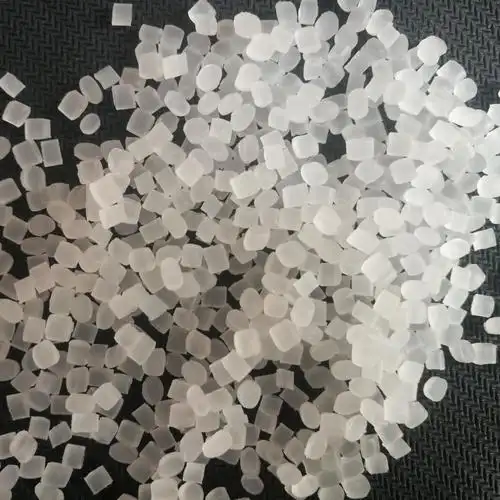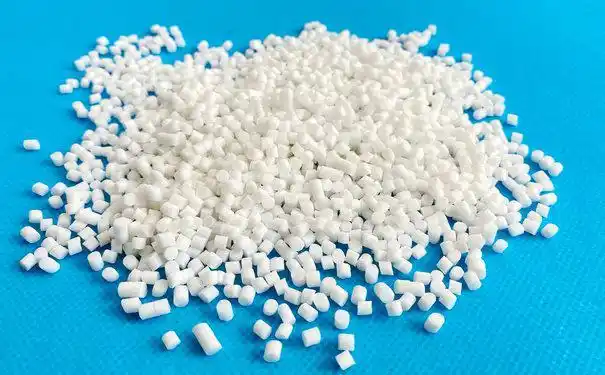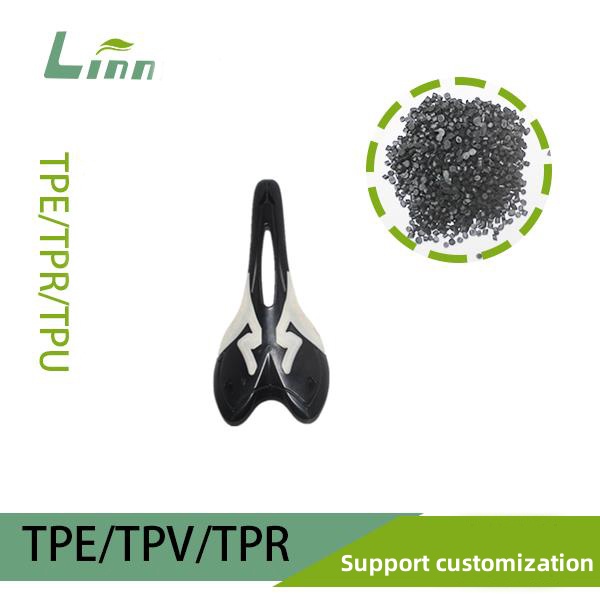Over my twelve years in the manufacturing and materials processing industry, I’ve tackled countless challenges in joining dissimilar materials. One question that keeps surfacing, whether I’m consulting for automotive suppliers or troubleshooting in a production line, is how to effectively bond aluminum alloy and thermoplastic elastomer (TPE). It’s a tricky task—aluminum is a lightweight, rigid metal, while TPE is a flexible, rubber-like plastic. Getting these two to form a strong, durable bond is no small feat, but it’s critical for applications like automotive components, consumer electronics, and medical devices. Drawing from my hands-on experience and lessons learned, I’ll guide you through the methods, challenges, and practical tips for successfully bonding aluminum alloy and TPE, ensuring you get a reliable result for your project.

Why Bond Aluminum Alloy and TPE?
Before we dive into the how-to, let’s clarify why this combination is so common. Aluminum alloys are prized for their strength-to-weight ratio, corrosion resistance, and sleek appearance, making them a staple in industries like aerospace, automotive, and electronics. TPEs, on the other hand, offer elasticity, soft-touch surfaces, and excellent grip, ideal for seals, grips, or overmolded components. Bonding these materials combines the best of both worlds: the structural integrity of aluminum with the comfort and functionality of TPE.
I first encountered this challenge while working on a project for a smartphone case. The client wanted a rigid aluminum frame with a TPE soft-touch grip. The bond needed to withstand drops, temperature changes, and daily wear. That experience taught me that bonding these materials isn’t just about sticking them together—it’s about creating a connection that lasts under real-world conditions.
Challenges in Bonding Aluminum Alloy and TPE
Joining aluminum and TPE is complex because of their vastly different properties:
Surface Energy Differences: Aluminum has high surface energy, while TPE has low surface energy, making adhesion difficult without proper surface preparation.
Thermal Expansion: Aluminum and TPE expand and contract at different rates when exposed to temperature changes, which can stress the bond and cause failure.
Chemical Incompatibility: TPEs are non-polar, while aluminum surfaces are polar, so standard adhesives often struggle to create a strong bond.
Mechanical Stress: Applications like grips or seals involve repeated flexing or pressure, which can weaken the bond over time.
I recall a project where we initially used a generic adhesive to bond TPE to aluminum for an automotive seal. Within weeks, the TPE began peeling under temperature fluctuations. That failure pushed me to explore more robust bonding methods, which I’ll share below.

Methods for Bonding Aluminum Alloy and TPE
There are several approaches to bond aluminum and TPE, each with its strengths and limitations. Based on my experience, I’ve outlined the most effective methods, along with practical insights to help you choose the right one.
1. Overmolding with Mechanical Interlocking
Overmolding is one of the most reliable ways to bond TPE to aluminum. In this process, molten TPE is injected directly onto a pre-formed aluminum part in a mold, creating a bond as the TPE cools and solidifies. To enhance the bond, mechanical interlocking is often used, where the aluminum surface is designed with features like grooves, holes, or undercuts that the TPE flows into, locking it in place.
How It Works: The aluminum part is placed in an injection mold, and TPE is injected at high pressure. The TPE fills the mold and any interlocking features, creating a strong mechanical bond.
My Experience: For a medical device handle, we machined micro-grooves into the aluminum surface before overmolding. The TPE gripped the grooves tightly, resulting in a bond that passed rigorous drop tests. Without the grooves, the TPE would have peeled off easily.
Tips: Ensure the aluminum is clean and free of oils. Use a TPE grade formulated for overmolding onto metal, such as SEBS-based TPEs with adhesion promoters.
2. Adhesive Bonding
When overmolding isn’t feasible (e.g., for post-assembly or non-molded parts), adhesive bonding is a viable option. Specialized adhesives can bridge the chemical gap between aluminum and TPE, creating a strong bond if applied correctly.
Adhesive Types:
Cyanoacrylates: Fast-curing but less durable for flexible TPEs.
Polyurethane Adhesives: Flexible and strong, ideal for dynamic applications.
Silicone-Based Adhesives: Good for high-temperature environments but slower to cure.
Epoxy with Primers: Offers excellent strength when paired with a primer to enhance TPE adhesion.
Surface Preparation: Aluminum must be degreased, abraded (e.g., sandblasting), and sometimes treated with a primer to improve adhesion. TPE surfaces may need plasma or corona treatment to increase surface energy.
My Experience: In an automotive project, we used a polyurethane adhesive with a plasma-treated TPE surface and sandblasted aluminum. The bond held up through years of vibration and temperature swings. Without surface treatment, the adhesive failed in testing.
Tips: Test adhesives on small samples first, as TPE formulations vary. Apply adhesives evenly and clamp parts during curing to ensure maximum contact.

3. Insert Molding with Chemical Bonding
Similar to overmolding, insert molding involves placing an aluminum part in a mold and injecting TPE around it. However, this method relies on chemical bonding rather than mechanical interlocking, using TPE grades with built-in adhesion promoters that bond directly to aluminum during molding.
How It Works: The TPE’s adhesion promoters (e.g., maleic anhydride-modified polymers) create a chemical bond with the aluminum’s oxide layer during the molding process.
My Experience: For a consumer electronics component, we used a TPE grade specifically designed for metal adhesion. The bond was so strong that the TPE tore before separating from the aluminum in pull tests. This method saved us from machining complex interlocking features.
Tips: Work closely with your TPE supplier to select a compatible grade. Preheat the aluminum insert to improve chemical bonding during molding.
4. Surface Treatment with Plasma or Corona
For both adhesive bonding and molding, surface treatments like plasma or corona can significantly improve bond strength by increasing the surface energy of TPE and aluminum.
Plasma Treatment: Uses ionized gas to activate the surface, creating reactive sites for bonding. Effective for both materials but requires specialized equipment.
Corona Treatment: Applies high-voltage electrical discharge to the TPE surface, increasing its polarity. Less common for aluminum but useful for TPE.
My Experience: In a project for TPE-coated aluminum brackets, plasma treatment doubled the bond strength compared to untreated surfaces. The investment in a plasma system paid off for high-volume production.
Tips: Treat surfaces just before bonding, as the effect diminishes over time. Ensure consistent treatment across the surface for uniform adhesion.
5. Mechanical Fastening as a Backup
In cases where bonding fails or isn’t feasible, mechanical fastening (e.g., screws, rivets, or snap-fits) can secure TPE to aluminum. While not a true “melt” or fusion process, it’s a practical fallback for non-critical applications.
My Experience: For a prototype TPE gasket on an aluminum housing, we used snap-fits to hold the TPE in place while testing adhesives. It wasn’t ideal for long-term use but worked for quick iterations.
Tips: Design fastening features to minimize stress on the TPE, as it can tear under excessive force.

Comparing Bonding Methods
To help you choose the right method, here’s a table summarizing the key bonding techniques for aluminum and TPE, based on my real-world applications.
| Method | Bond Strength | Best For | Key Considerations |
|---|---|---|---|
| Overmolding | High | Mass production, complex parts | Requires interlocking features; mold design critical |
| Adhesive Bonding | Moderate to High | Post-assembly, non-molded parts | Surface prep essential; adhesive selection key |
| Insert Molding | High | Parts needing chemical bonding | Needs specialized TPE grade; precise molding |
| Mechanical Fastening | Moderate | Prototypes, low-cost fixes | Not a true bond; may stress TPE |
Note: Bond strength depends on material grades, surface prep, and application conditions. Test methods before full production.
This table reflects practical trade-offs. For example, overmolding is ideal for high-volume, durable parts but requires significant upfront investment in tooling. Adhesive bonding is more flexible but demands meticulous surface preparation.
Real-World Applications
Let’s look at two projects where I successfully bonded aluminum and TPE, showcasing how these methods play out.
Case 1: Automotive Door Seals
A client needed TPE seals bonded to aluminum frames for car doors, requiring a bond that could handle temperature swings and constant flexing. We opted for insert molding with a TPE grade containing adhesion promoters. The aluminum was sandblasted and preheated to 80°C before molding. The resulting bond passed 10,000 cycle tests without delamination, and the seals are still in use on thousands of vehicles.
Case 2: Consumer Electronics Grip
For a smartwatch with an aluminum body and TPE grip, we used adhesive bonding due to the small part size and post-assembly requirements. The aluminum was abraded, and the TPE was plasma-treated. A polyurethane adhesive created a flexible, durable bond that survived drop tests and sweat exposure. This approach allowed rapid prototyping without custom molds.

Challenges and Practical Tips
Bonding aluminum and TPE isn’t without hurdles. Here are some challenges I’ve faced and tips to overcome them.
Challenges
Cost: Overmolding and insert molding require expensive molds, while plasma treatment equipment is a significant investment.
Material Variability: TPE formulations differ widely, and not all are compatible with aluminum bonding. Aluminum alloys also vary in oxide layer properties.
Environmental Stress: Temperature changes, humidity, or chemical exposure can weaken bonds over time.
Testing Time: Finding the right method often requires multiple trials, delaying production.
Tips
Collaborate with Suppliers: Work with TPE and adhesive suppliers to select compatible materials. They often provide free samples for testing.
Prototype Extensively: Test bonding methods on small batches to avoid costly rework in production.
Control Surface Prep: Use consistent cleaning and treatment processes (e.g., degreasing with isopropyl alcohol) to ensure repeatable results.
Account for Stress: Design parts to minimize thermal or mechanical stress on the bond, such as adding stress-relief features.
Document Processes: Record successful parameters (e.g., molding temperatures, adhesive cure times) to streamline future projects.

The Future of Aluminum-TPE Bonding
The industry is pushing toward more efficient and reliable bonding methods. Advanced TPE formulations with built-in metal adhesion are reducing reliance on complex surface treatments. I recently saw a demo of a TPE that bonds to aluminum without primers, thanks to novel polymer chemistry—game-changing for high-volume production.
Hybrid processes combining overmolding with in-mold adhesives are also emerging, offering the strength of molding with the flexibility of adhesives. Additionally, laser surface structuring is gaining traction, where lasers create micro-textures on aluminum to enhance mechanical interlocking without machining. These innovations promise to make bonding easier and more cost-effective in the coming years.
Final Reflections
Bonding aluminum alloy and TPE is a challenge worth tackling for the incredible functionality it enables. Whether you choose overmolding, adhesive bonding, insert molding, or a combination, success lies in understanding your materials, preparing surfaces meticulously, and testing rigorously. My years in the field have shown me that there’s no one-size-fits-all solution, but with the right approach, you can create bonds that are strong, durable, and tailored to your application.
Whether you’re designing a cutting-edge gadget or a heavy-duty automotive part, these methods—refined through trial and error—will help you achieve a reliable aluminum-TPE bond. Take the time to experiment, consult experts, and invest in quality processes, and you’ll turn a complex challenge into a standout feature of your product.

Related Questions and Answers
Q: Can I bond TPE to aluminum without surface treatment?
A: It’s possible with specialized TPE grades designed for metal adhesion, but surface treatments like sandblasting or plasma significantly improve bond strength for most applications.
Q: How do I choose between overmolding and adhesive bonding?
A: Overmolding is better for high-volume, integrated parts with complex geometries. Adhesive bonding suits post-assembly or low-volume projects where molding isn’t feasible.
Q: What TPE types bond best to aluminum?
A: SEBS-based TPEs with adhesion promoters or TPUs formulated for metal bonding tend to perform best. Consult your supplier for specific grades.
Q: How do I test the strength of an aluminum-TPE bond?
A: Use pull tests, shear tests, or peel tests to measure bond strength. Environmental testing (e.g., temperature cycling, humidity exposure) ensures long-term durability.
Q: Can temperature changes damage the bond?
A: Yes, due to differing thermal expansion rates. Design parts with stress-relief features and choose flexible adhesives or TPE grades to minimize this risk.





